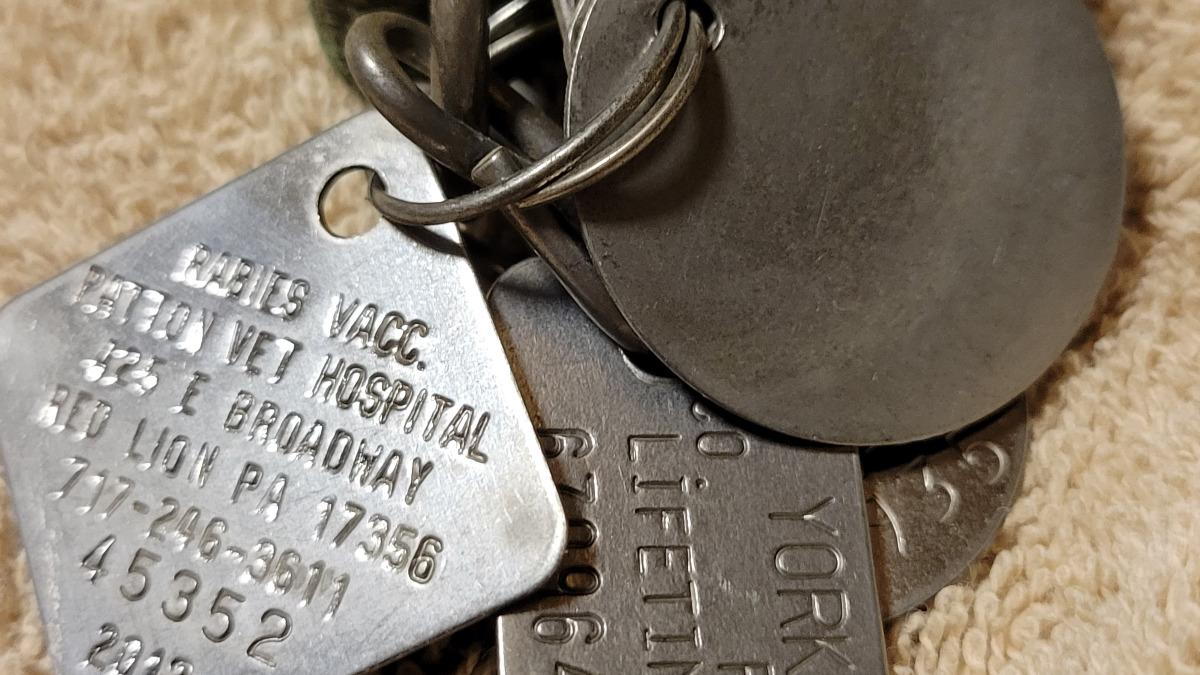National Pet ID Week

- posted: Apr. 16, 2022
National Pet ID Week
This week marks National Pet ID Week. Nearly ten million pets go missing in the United States each year and more than half of these end up in shelters. Having ID on a pet greatly increases the chance of reuniting a lost pet with its owner. Microchips or tags are the main forms of identification.
Having an ID tag on your pet’s harness or collar and keeping that ID on especially when walking or traveling is an excellent way to identify your pet should he or she become lost. Tags should contain the following information: a contact name, current address and phone number. Make sure tag information is updated if you move or your phone number changes. Wearing a collar and visible ID tag on your pet as is the quickest way to get your pet back to you.
A word of warning: While identification of cats is important, cat collars may become snagged on objects and could cause the cat to choke if ensnared. Breakaway collars are recommended for cats; however, if the collar comes off, the ID tag is also lost. A microchip may be a better, more permanent form of identification for both dogs and cats.
Microchips are small, glass coated electronic radio transmitters. They are about the size of a piece of long-grain rice and are safe and non-reactive. The chip does NOT emit a constant signal and is NOT a tracking device. It simply stores a unique number like a bar code which is revealed on a scanning device that picks up the radio frequency signal from the chip when the scanner is waved over the chip. The microchip’s unique number must be linked to your information in the manufacturer’s data base in order for your pet to be reunited with you should he get lost. As with ID tags, make sure to update information in the database if you move or your information changes. At this time, there are many different companies that make microchips and several different frequencies used but, luckily, all should be detected by universal scanners.
Microchips are implanted under the skin between the shoulder blades. Occasionally, the chip may move or “migrate” to another area beneath the skin but this does not harm the pet and should not affect how the chip works.
Even if your pet spends all her time inside the house, it may not be a bad idea to consider a microchip just in case she would happen to slip outside and run away. Patton Veterinary Hospital offers microchipping for both dogs and cats.
Keep pets safe and give them the best chance of returning to you if lost by wearing ID tags with current information and/or by having your pets microchipped.
This blog brought to you by the Patton Veterinary Hospital serving Red Lion, York and the surrounding communities.
https://www.petfinder.com/dogs/lost-and-found-dogs/how-pet-microchips-work/
https://www.avma.org/microchipping-animals-faq
https://www.americanhumane.org/blog/tips-for-national-pet-id-week/
Location
Patton Veterinary Hospital
425 E Broadway
Red Lion, PA 17356
